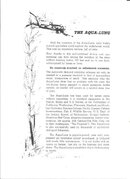BM: It is mainly being streamlined—if you don’t need it, don’t take it.
I've generalized this idea beyond diving to really thinking about what I need. Wants count to if I can articulate why. For example, when I'm going on a trip, I practice Hogarthian packing. Last year I used it to pare down my library to where it actually fit, single stacked, on my shelves.
The whole minimalism movement is partially based on this. But the lightbulb came on for me from thinking about Hogarthian diving.
I've generalized this idea beyond diving to really thinking about what I need. Wants count to if I can articulate why. For example, when I'm going on a trip, I practice Hogarthian packing. Last year I used it to pare down my library to where it actually fit, single stacked, on my shelves.
The whole minimalism movement is partially based on this. But the lightbulb came on for me from thinking about Hogarthian diving.




 .
.